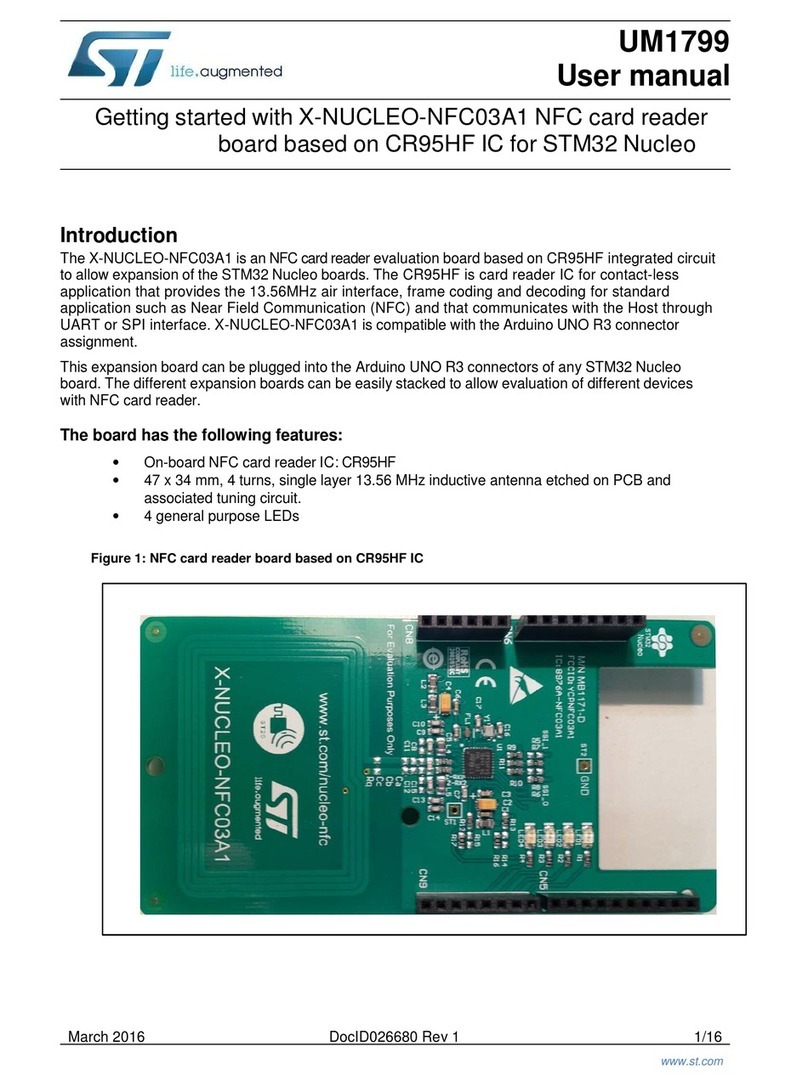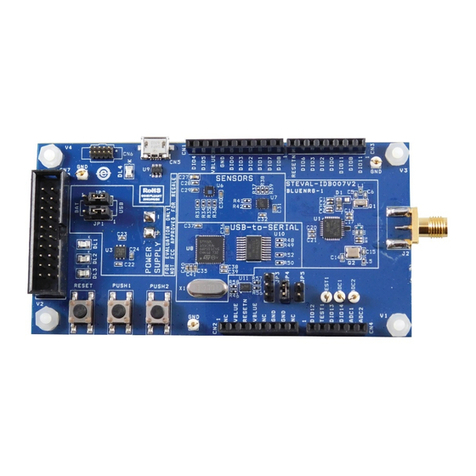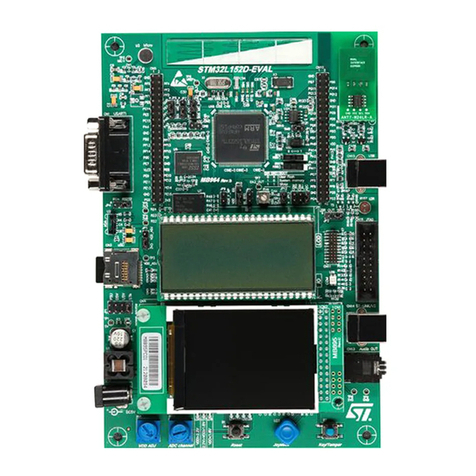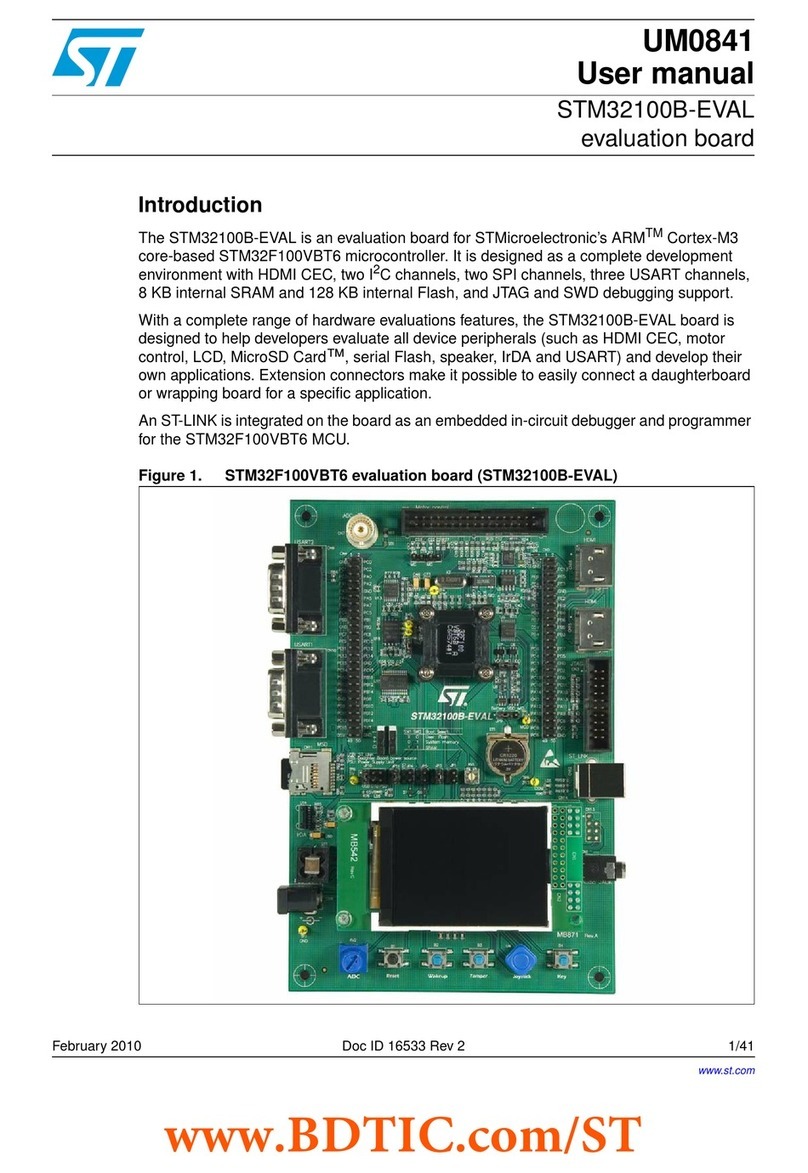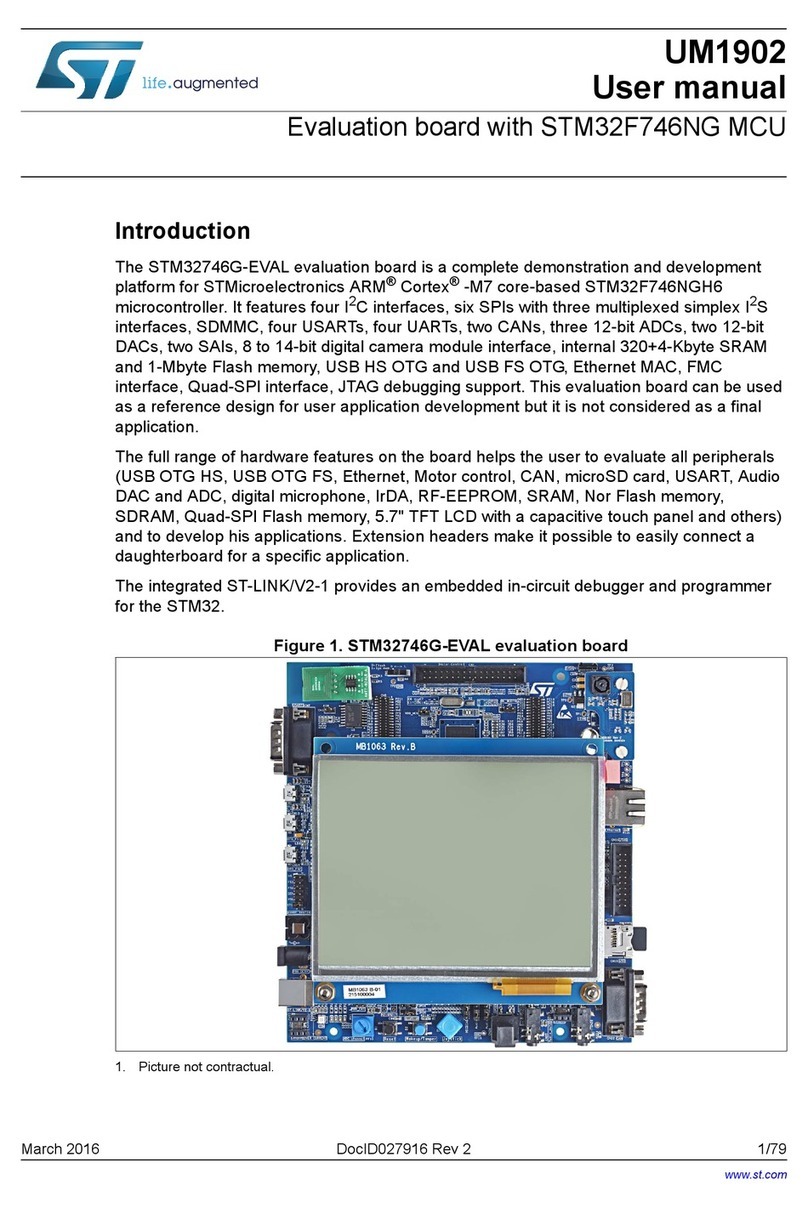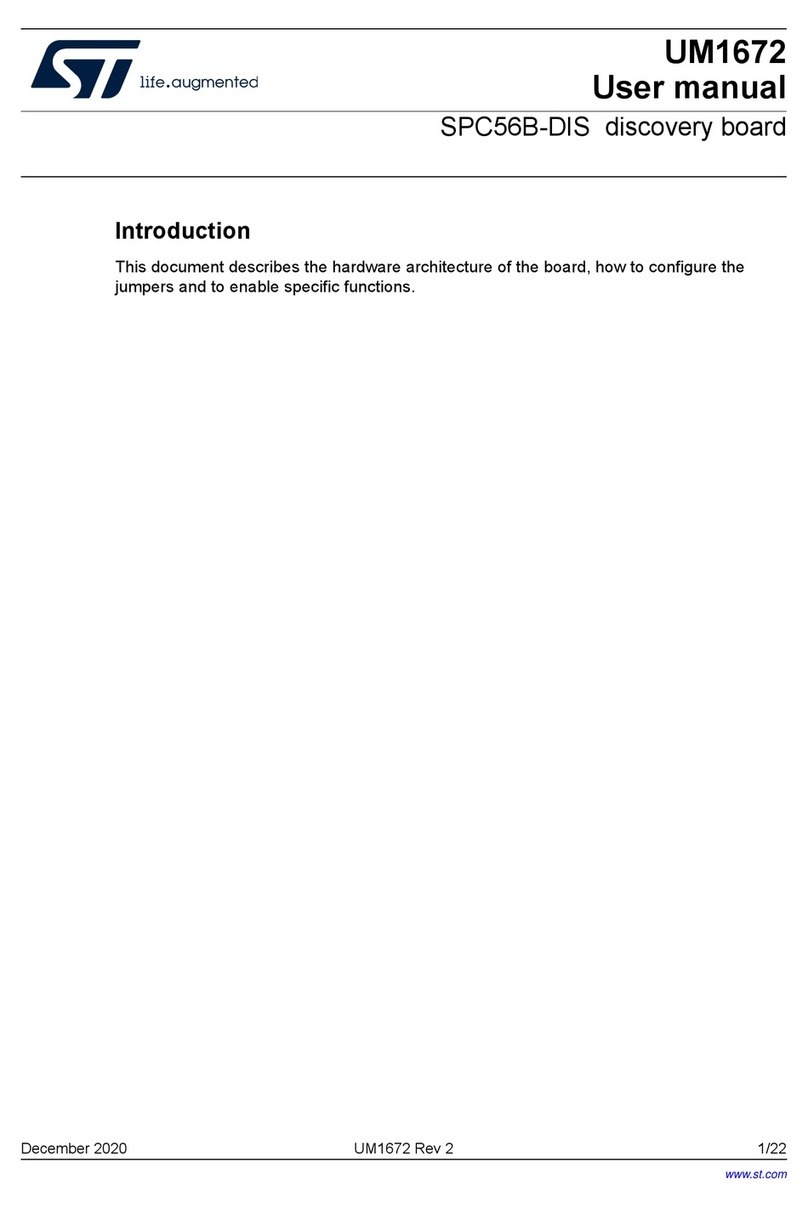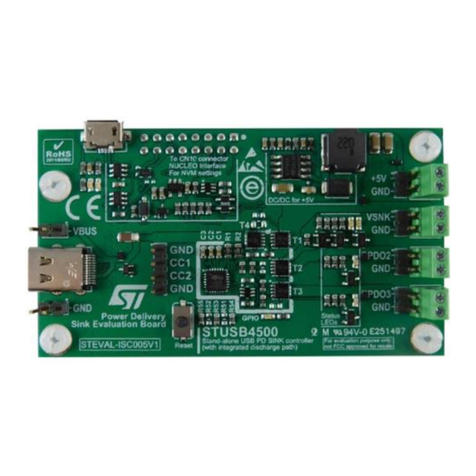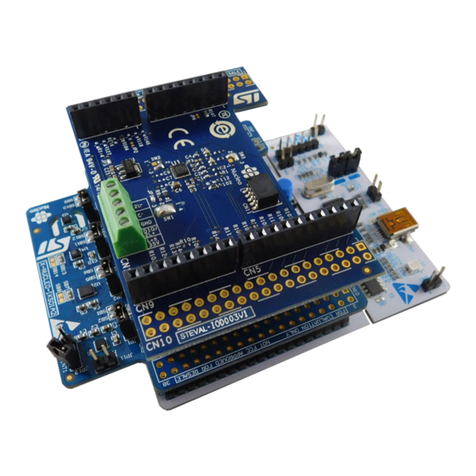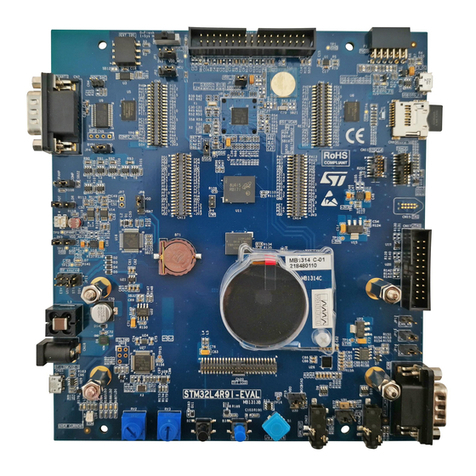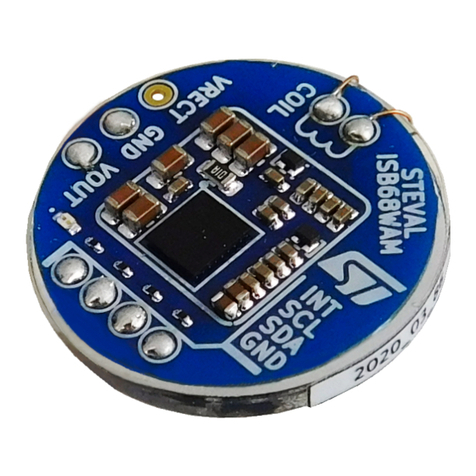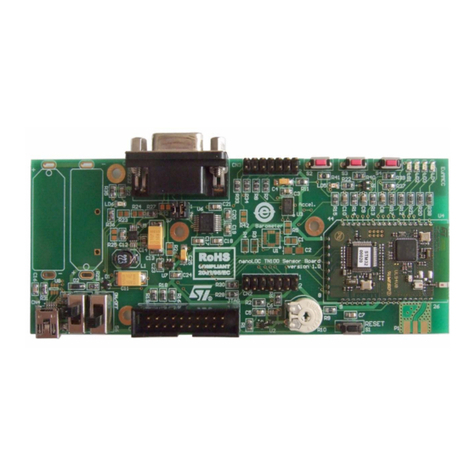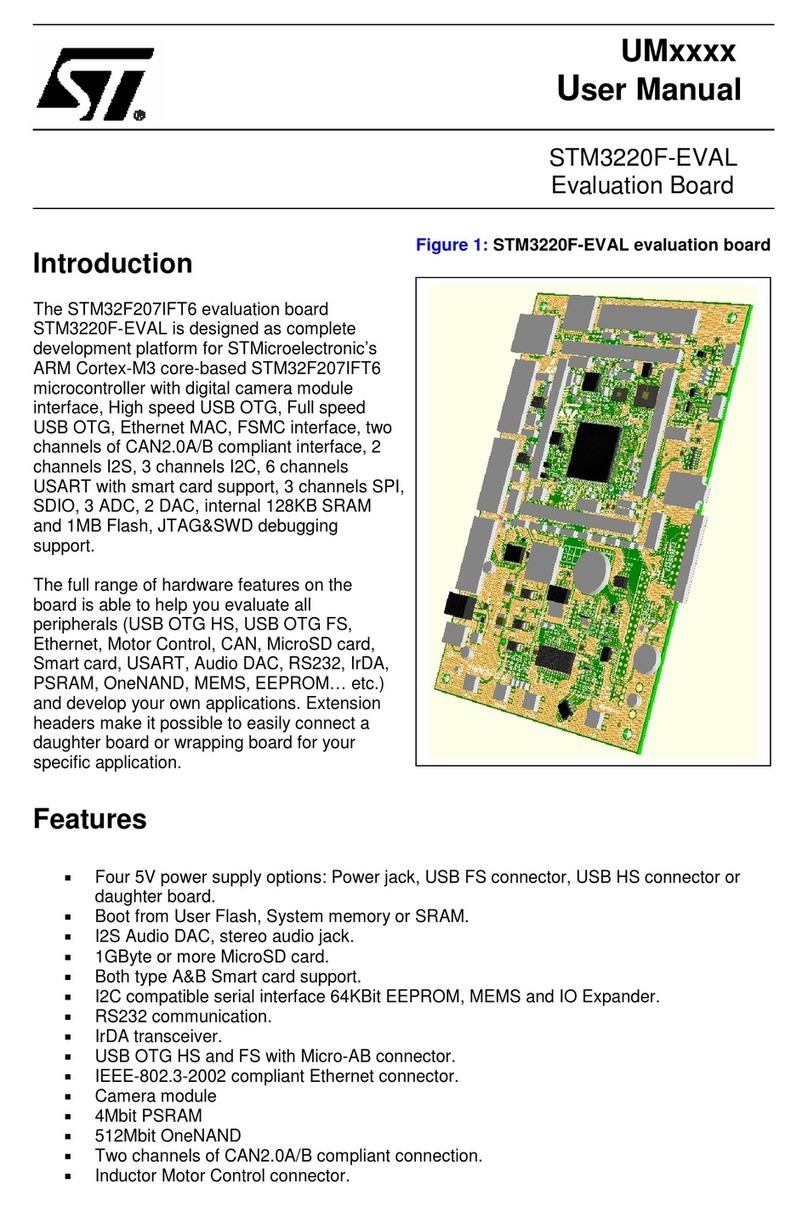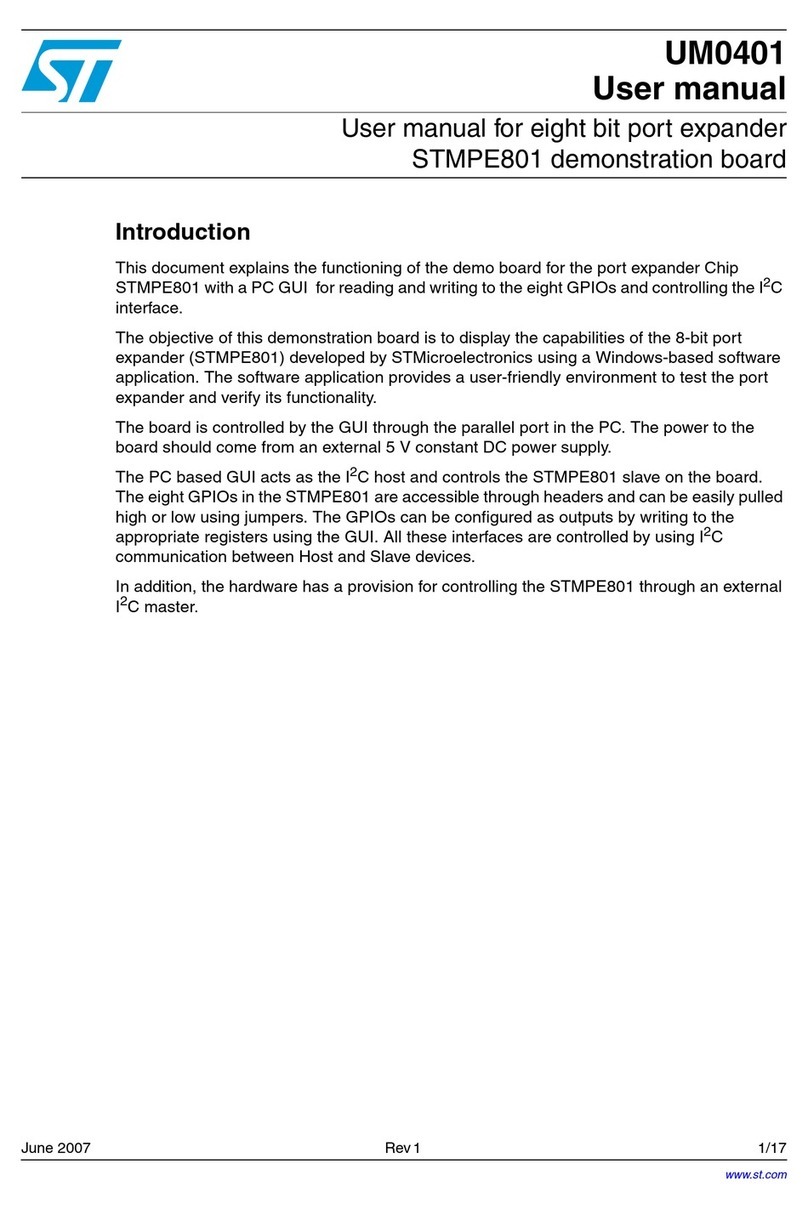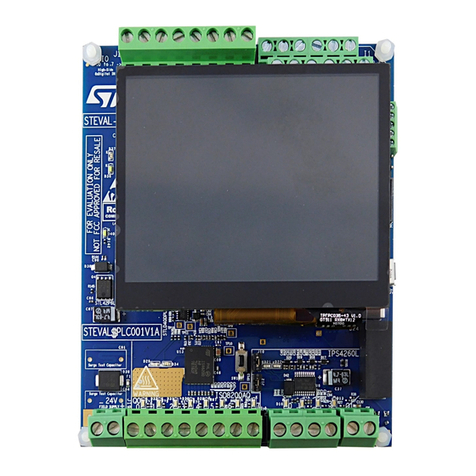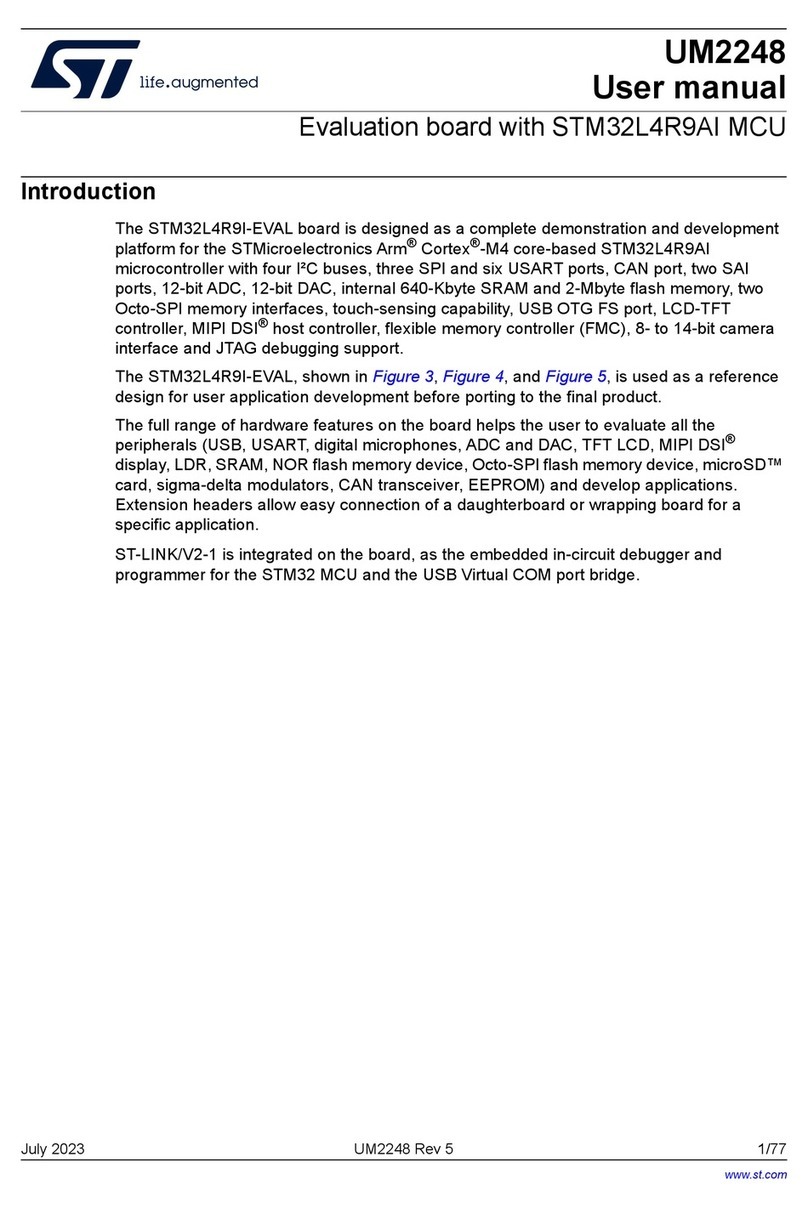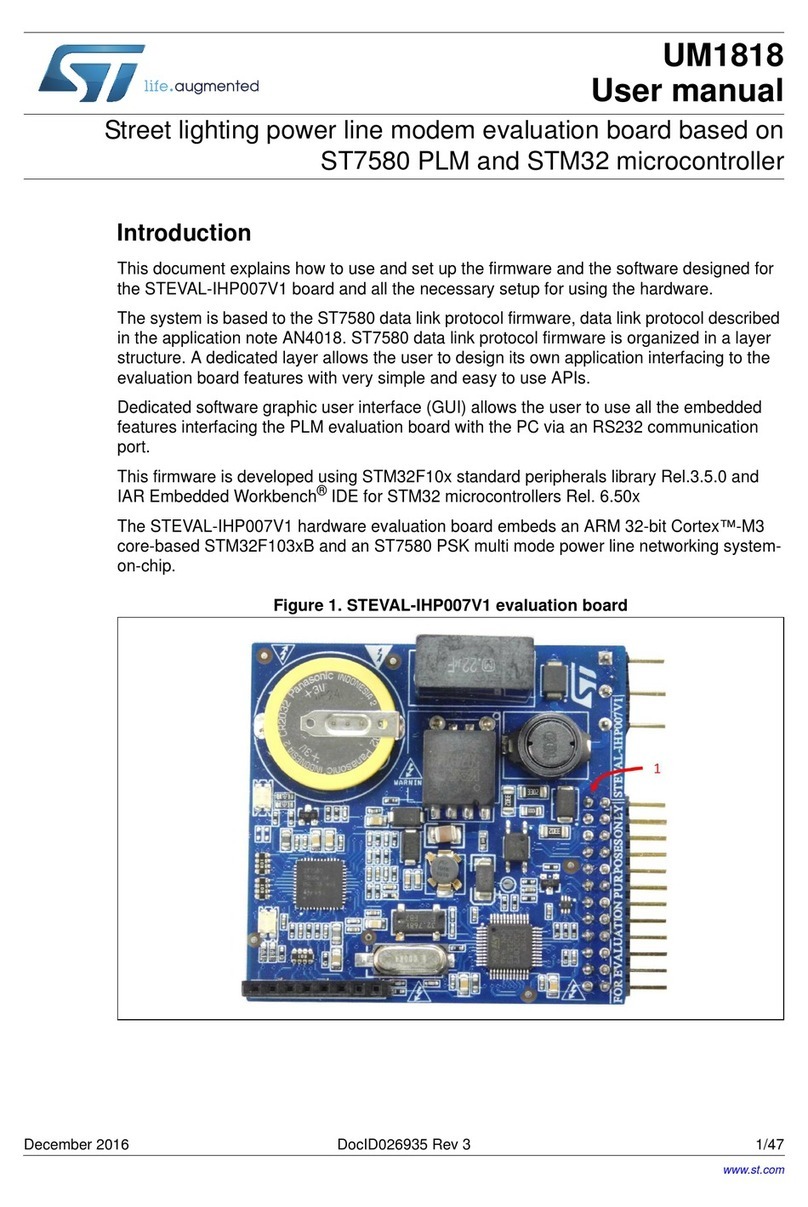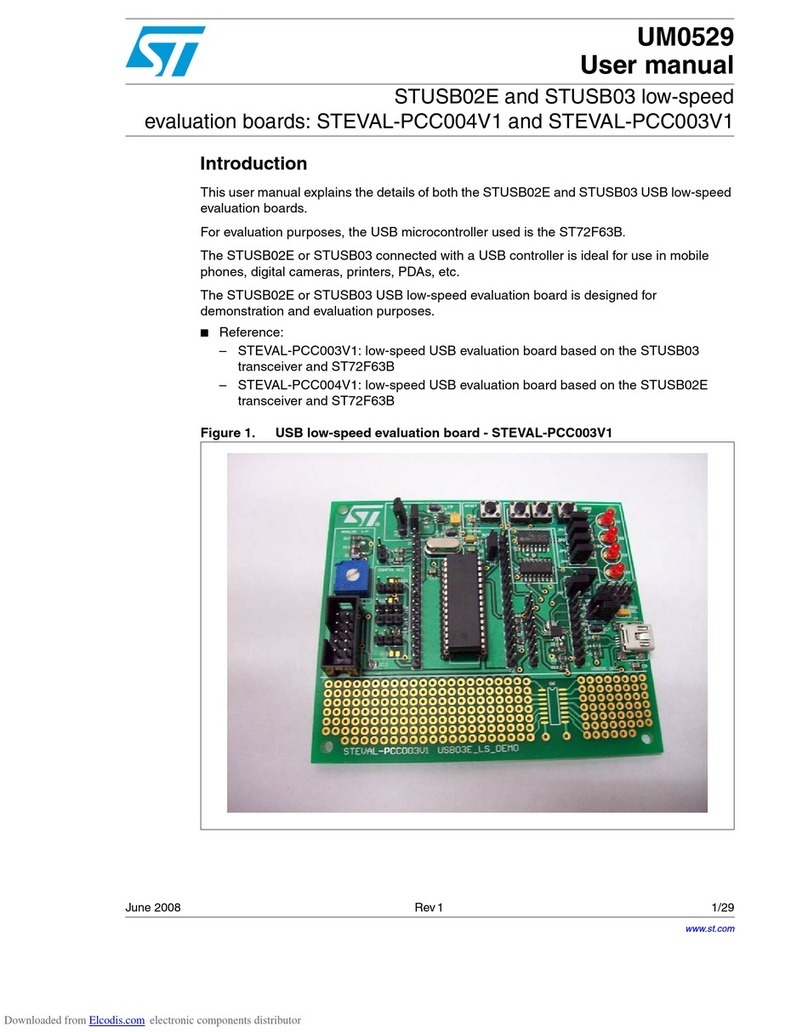8
4
Troubleshooting
The following section reports some tips to be followed if the STEVAL-IDB011V1 platform is
not recognized as a CMSIS-DAP device once connected to a PC USB port, or if user is not
able to connect/debug to the selected platform through a CMIS-DAP programmer/debug
tool:
1. The STEVAL-IDB011V1 platform starts always in “MAINTENANCE” mode.
a. The USB_CMSISDAP firmware is not loaded. Follows the instructions in the
UM2735 manual (Table 2. Reference information, UM2735), section 2.9.4
“USB_CMSISDAP firmware update” in order to load the USB_CMSISDAP
firmware. Please notice that this condition is not expected , since the
USB_CMSISDAP firmware is programmed at STEVAL-IDB011V1 manufacturing
time.
b. The application loaded in the BlueNRG-LP device makes the device continuously
reset. Since the RTSN signal is used at the startup by the USB_CMSISDAP
firmware for choosing to start in “MAINTENANCE” mode or not, it is necessary to
disconnect the RSTN signal of the BlueNRG-LP from the USB_CMSISDAP. In
order to do it, user must perform the following steps:
1. Remove the jumper JP5.
2. Unplug the USB cable (if plugged).
3. Plug the USB cable.
4. The mass storage device “ST IDB011VX” should be present among the
devices in Windows “Devices and drives”.
5. Put back the jumper JP5 (fitted position).
6. Now user should able to use the USB_CMSISDAP firmware in order to fix the
code in the BlueNRG-LP.
2. It is not possible to connect to the STEVAL-IDB011V1, BlueNRG-LP device with the
on board CMSIS-DAP debugger/programmer.
a. The BlueNRG-LP could be under reset, or the SWD pins have been configured in
a different mode at the startup of the application, or the application sets the device
in DEEPSTOP modes which powers off the debug port.
In such cases, it is possible to recover the BlueNRG-LP status as follow:
1. Plug the USB cable in order to power up the board.
2. Press and hold the PUSH1 button.
3. Press the RESET button.
4. This operation activates the internal UART bootloader: now it is possible to
connect the CMSIS-DAP debugger/programmer to the BlueNRG-LP.
NOTES:
1. Please refer to the STSW-BNRGLP-DK, C:{Installation_Path}\
ST\BlueNRG-LP DK x.x.x\Docs\BlueNRG-
LP_Debugging_Guidelines\BlueNRG-LP_Debugging_Guidelines.html
document for useful guidelines to be followed in these scenarios:
•CMSIS-DAP programming vs BlueNRG-LP running application in low
power modes
•Debugging vs BlueNRG-LP running application in low power modes.


